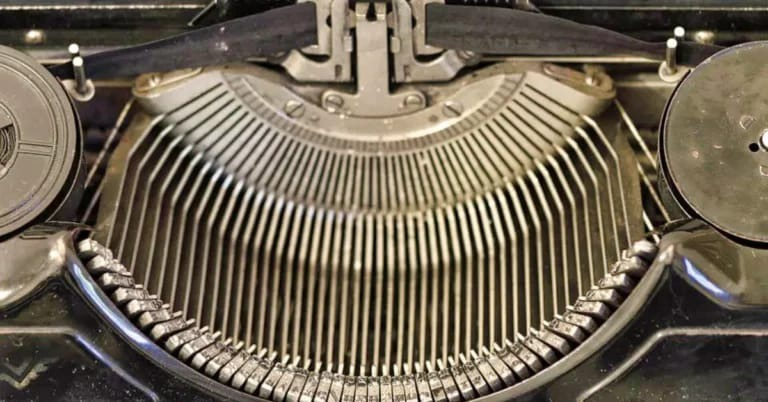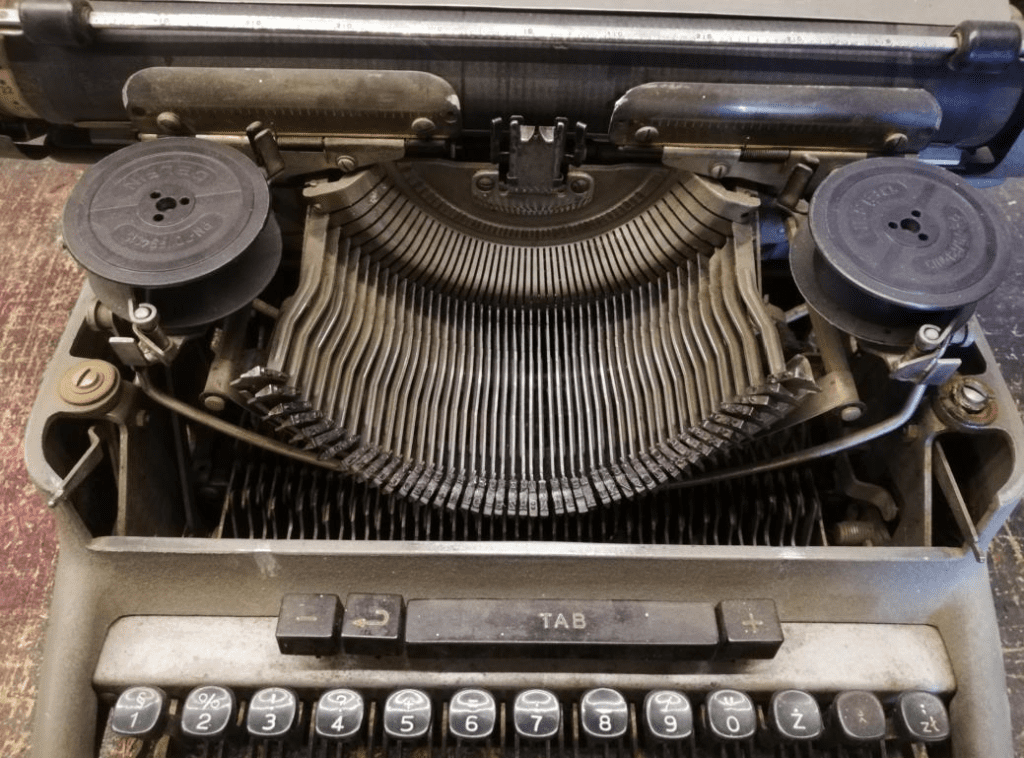The typewriter, a mechanical marvel from a bygone era, is more than just a relic of the past—it’s a symbol of innovation, creativity, and the human drive to simplify communication. Though most people today might recognize a typewriter as an antique curiosity, its impact on writing, technology, and society remains undeniable. Let’s journey back to its origins, explore its influence, and celebrate its legacy.
The Dawn of the Mechanical Writing Machine

The idea of a machine that could mechanize writing first emerged in the 18th century. However, the first commercially successful typewriter, the Sholes and Glidden Typewriter—often referred to as the Remington No. 1—didn’t debut until 1873. This machine revolutionized writing by offering speed and efficiency that handwriting simply couldn’t match.
Interestingly, the typewriter also introduced the QWERTY keyboard layout, a design that remains the standard for modern keyboards. This layout was developed to prevent jamming in early mechanical typewriters by spacing commonly used letter combinations apart.
How the Typewriter Transformed Society
The invention of the typewriter wasn’t just a technological milestone—it reshaped how people worked, communicated, and even thought about writing. Here’s how it made its mark:
1. Accelerating Productivity
Typewriters dramatically increased the speed of writing. For businesses, this meant faster document production, boosting office efficiency. Typists, with their lightning-fast fingers, became indispensable in workplaces around the world.
2. Standardizing Documents
Before typewriters, handwritten documents were prone to inconsistencies. Typewriters brought uniformity, ensuring that every letter, memo, and legal document was clear, legible, and professional.
3. Revolutionizing Journalism
In the newsroom, the typewriter was a game-changer. Journalists could quickly draft articles, meeting tight deadlines with ease. This innovation played a critical role in the rapid expansion of newspapers, making timely news a cornerstone of society.
4. Making Writing Accessible
As typewriters became more affordable, they empowered individuals to write with greater ease. This democratization of writing allowed more people to engage in professional correspondence, creative endeavors, and personal communication.
5. Preserving Text for Generations
Typewritten pages, being more durable than handwritten ones, offered better preservation of records. This durability has helped maintain historical documents, legal records, and literary works that continue to inform and inspire.
The Decline and Enduring Appeal of Typewriters
With the advent of computers and digital technology, typewriters gradually faded from mainstream use. Yet, their legacy continues to thrive in unexpected ways:
1. Collector’s Items and Nostalgia
Vintage typewriters have become coveted collector’s items, admired for their craftsmanship and design. For many, the rhythmic clacking of keys evokes a sense of nostalgia, transporting them to a simpler time.
2. Tools for Creativity
Despite the prevalence of digital tools, some writers still swear by typewriters for their tactile experience. The deliberate act of pressing keys and seeing words appear on paper can ignite creative inspiration in ways that a laptop keyboard can’t.

3. Art and Design
Typewritten text has found new life in art. Artists and designers often incorporate its unique aesthetic into their creations, blending retro charm with contemporary flair.
4. Pop Culture Icons
From classic novels to blockbuster films, typewriters frequently appear as symbols of creativity, determination, and timelessness. They represent a bridge between the analog and digital worlds.
5. Writing Retreats and Workshops
For those seeking to unplug and focus, typewriters offer a refreshing alternative. Writing retreats and workshops often provide typewriters to encourage mindfulness and a deeper connection to the act of writing.
The Typewriter’s Role in Shaping Innovation
Though replaced by modern technology, the typewriter’s influence is woven into the fabric of today’s tools. The QWERTY layout, for example, is a direct descendant of typewriter design, demonstrating how innovations from the past continue to shape our digital lives.
Moreover, the typewriter’s impact on workflow efficiency paved the way for subsequent advancements, from word processors to cloud-based collaboration tools. It’s a reminder that groundbreaking inventions often serve as stepping stones to greater progress.
A Symbol of Resilience and Creativity
The typewriter is more than just a machine—it’s a symbol of human ingenuity. It represents the desire to communicate effectively, the artistry of crafting words, and the unyielding drive to innovate. Whether you view it as a tool for productivity or an object of artistic beauty, the typewriter holds a unique place in our cultural consciousness.
Conclusion: A Legacy That Lives On
The typewriter’s journey from a revolutionary invention to a cherished relic is a testament to its enduring significance. It bridged the gap between handwritten manuscripts and modern digital communication, forever changing how we create and share ideas.
Even as technology continues to evolve, the typewriter reminds us of the beauty in simplicity and the joy of physical connection to our words. Whether you’re a writer, a collector, or simply someone who appreciates history, the typewriter offers a glimpse into a time when each keystroke carried weight and meaning.
So, the next time you stumble upon an old typewriter, don’t dismiss it as just an artifact of the past. Instead, see it for what it truly is—a timeless piece of innovation that continues to inspire and captivate us all.





